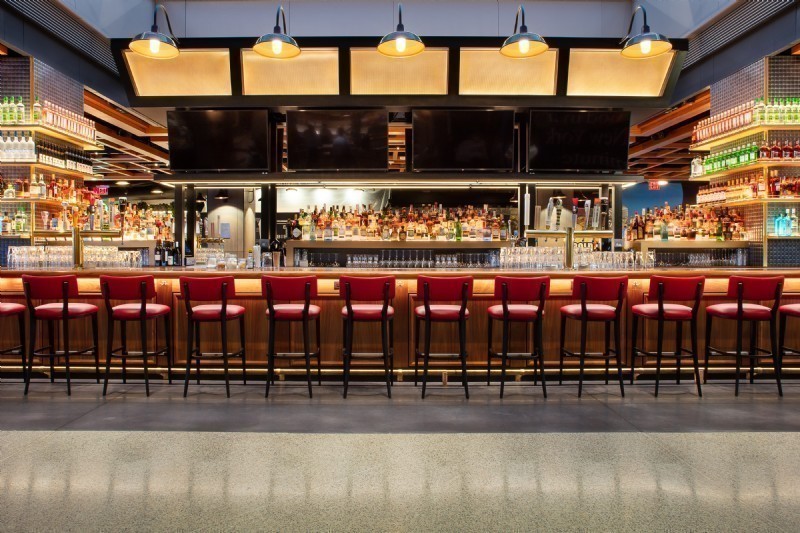
Farley Bar Features Top Shelf LED lighting in Moynihan Hall
The $2.5 billion transformation of The James A Farley Building into the Moynihan Train station kicked off in 2016, although late Senator Daniel Patrick Moynihan started advocating for its redesign decades earlier. The Farley Building is the sister structure to Penn Station, a building whose disastrous remodel has become synonymous with the ruination of classic architecture and an example of expensive and unsightly public spaces. Moynihan wanted to correct that by developing a world-class transit hub in the Farley Building.
“You don’t get a second chance like this often. We must do it,” Moynihan famously stated.
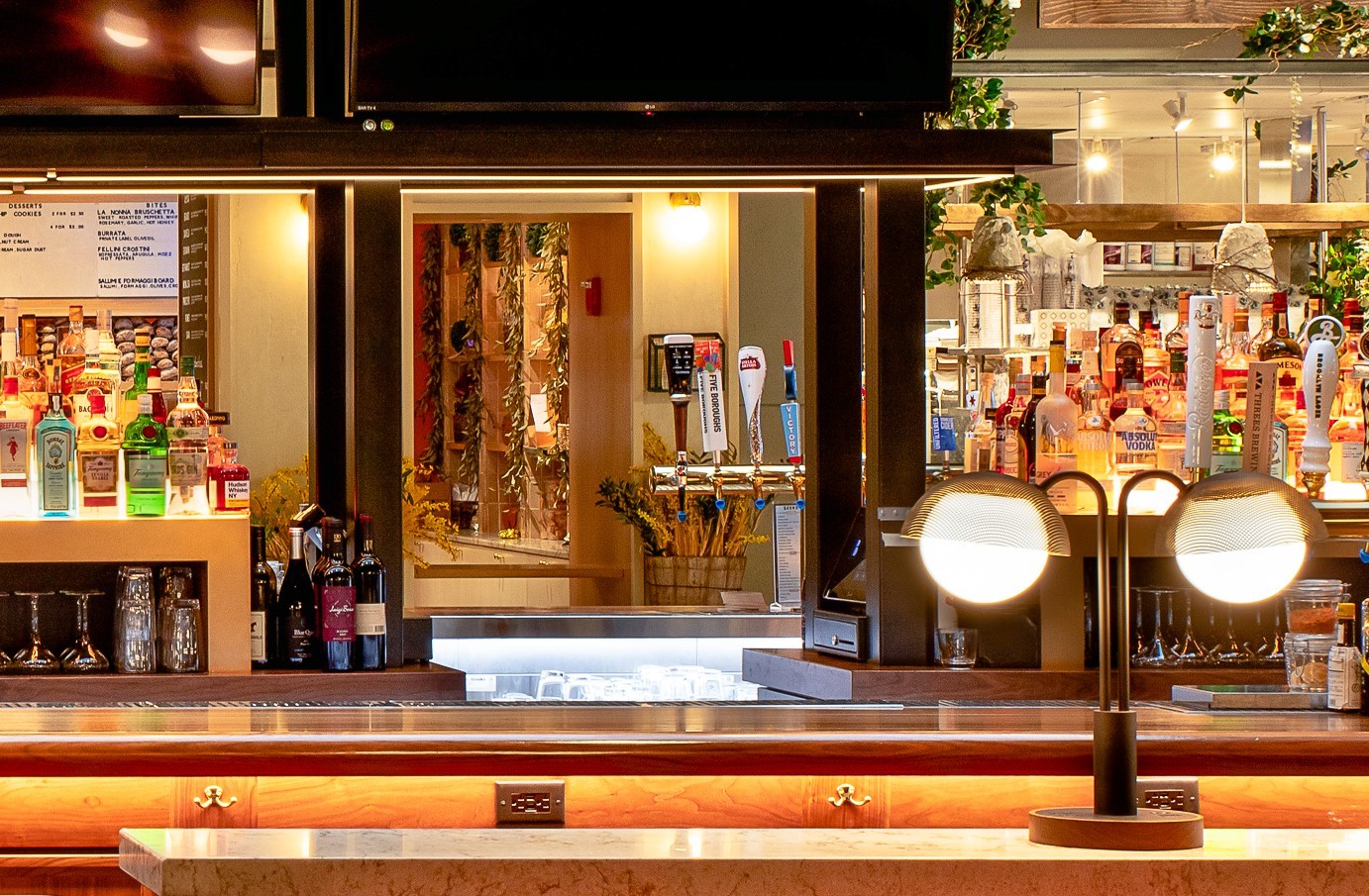
Because of this history, the design choices in the Farley Building’s transformation into Moynihan Train Hall were carefully considered, including its lighting design, as can be seen in the Farley Bar concourse. The team behind the effervescent bistro atmosphere was developers Vornado Realty, Elkus Manfredi Architects, and Cline Bettridge Bernstein Lighting Design.
Positioned two stories below the glass atrium, in bird's eye view from above and a featured focal point of the main entryway, the Farley Bar acts as a warm beacon to travelers. Associate Min Young Kim, Senior Associate Nira Wattanachote, Associate Principal Michael Hennes, and Principal Francesca Betteridge of CBB Lighting Design outfitted the restaurant's bar and surrounding dining spaces with sophisticated lighting elements to create a welcoming and upscale ambiance.
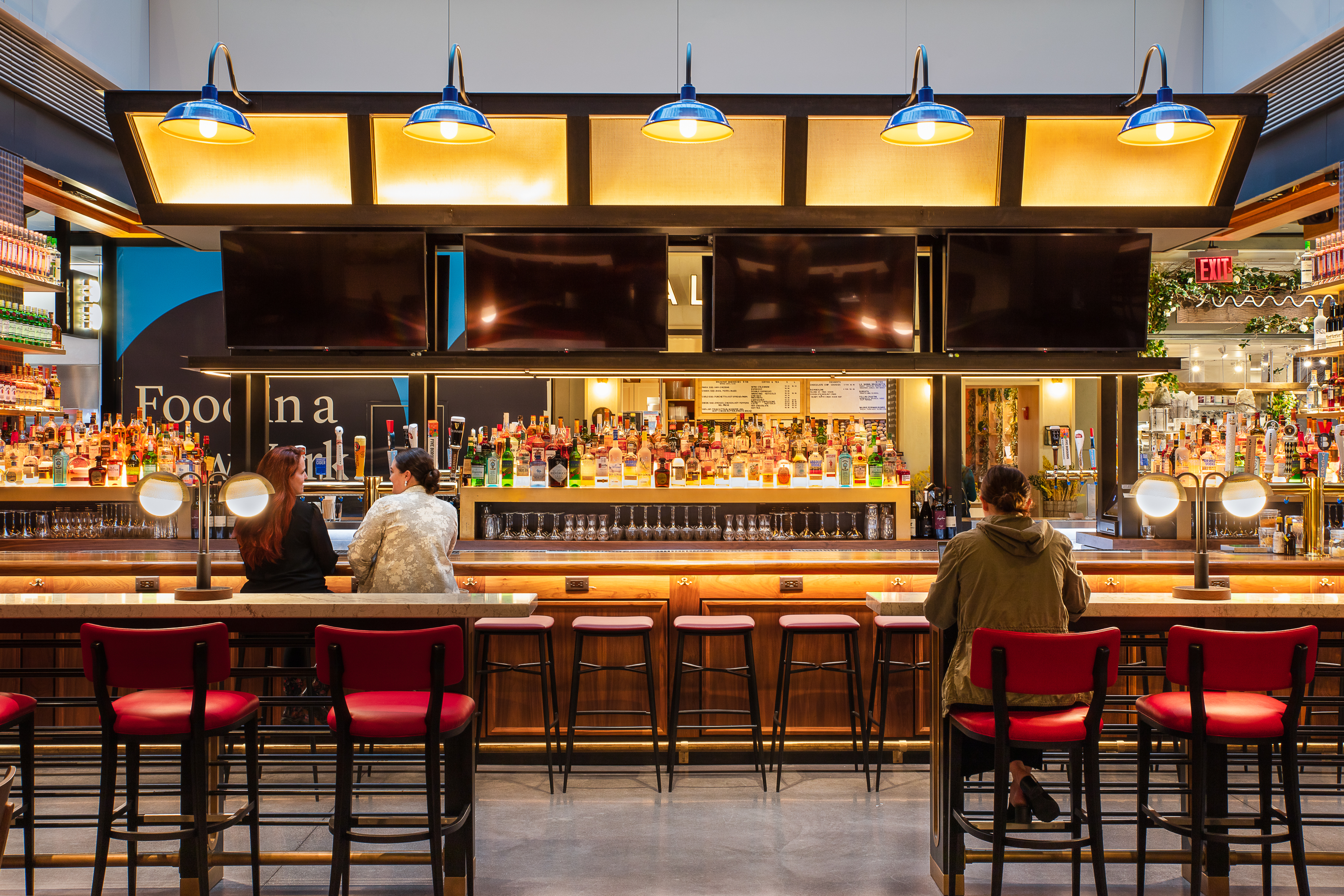
Michael shares, "Everything creates a wonderful glow and draws the eye. The lit shelves draw the eye up, and looking head on, the lit bar front draws you in further. You're manipulating the viewer, but in a wonderful way."
“The custom-made mesh panels above the bar help give the space a monumental statement," Nira adds.
Like any project, the Farley Bar schematic had its unique challenges. The open atrium limited options for overhead lighting, and while the glass skylight allowed desirable daylight, it created an environment that changed with weather and time of day.
Nira emphasizes the importance of achieving low-end dimming, especially in hospitality settings, as she reflects on setting light levels with the bar operator. "They wanted the light to step down lower as it gets later in the evening so that it transitions from a daytime feel. There are several steps over dusk as it gets darker. Having a chill, low-level light for after sunset is important. If you're doing a restaurant and you can't dim low, then you can't quite get that ambiance."
The team relied on mockups to achieve seamless integration and light uniformity against the varied surface materials and architectural features integral to the space.
Needing a variety of connectors and feed options, the team decided to use QTM-DC power supplies, concealing them within the mesh paneled architectural feature. These powered the static white LED grazers running along its trim and allowed a seamless finish. Compact QZ LED drivers were concealed in the shelving systems to power the strip lighting within the bar coves and shelves.
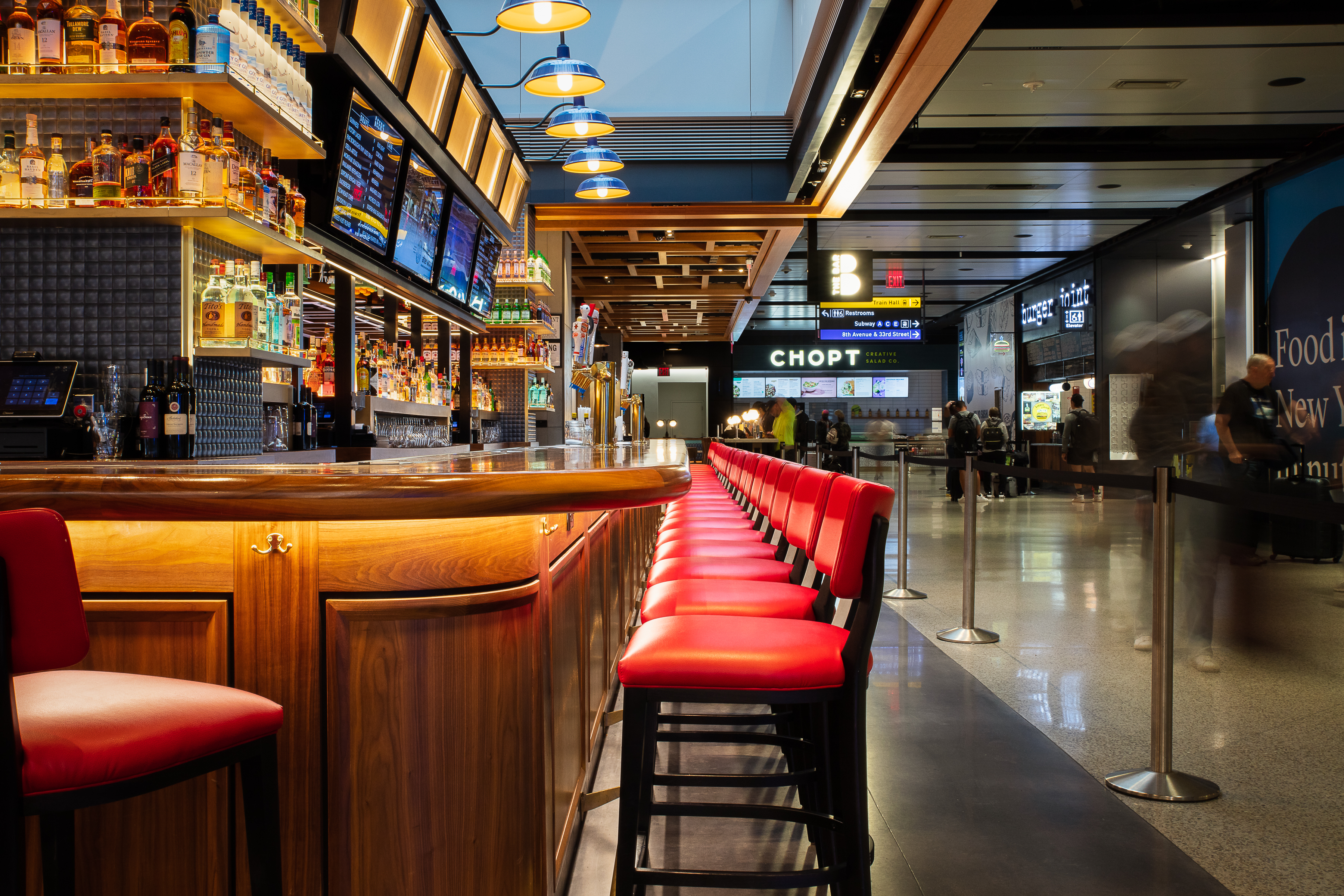
Nira reveals that a mix of color temperatures were combined to create the desired ambiance for the space. All the general lighting used was 2700K, which created the warming glow of an inviting hospitality environment. Recessed LED strips around the bar's perimeter in the same CCT highlight the texture and color of the wood structure. However, to express the refreshing feel of an ice-cold beverage, they opted for cooler 4000K LEDs on the inner edge of the bar to highlight the ice wells and service stations.
Underlighting the bottle displays required rigorous testing and yet another CCT. "The shelves are illuminated translucent risers with damp-rated QTL LED strips. One of the things we found interesting here is we were trying to keep a consistent 2700K warm feel to everything, but to get the light in the risers to feel like it was the same, we had to go warmer there, to 2400K. The only way to get it right was to build mockups. Being able to see things together, to turn on samples, to look at how products blend, that's important for us to do these days," Michael states.
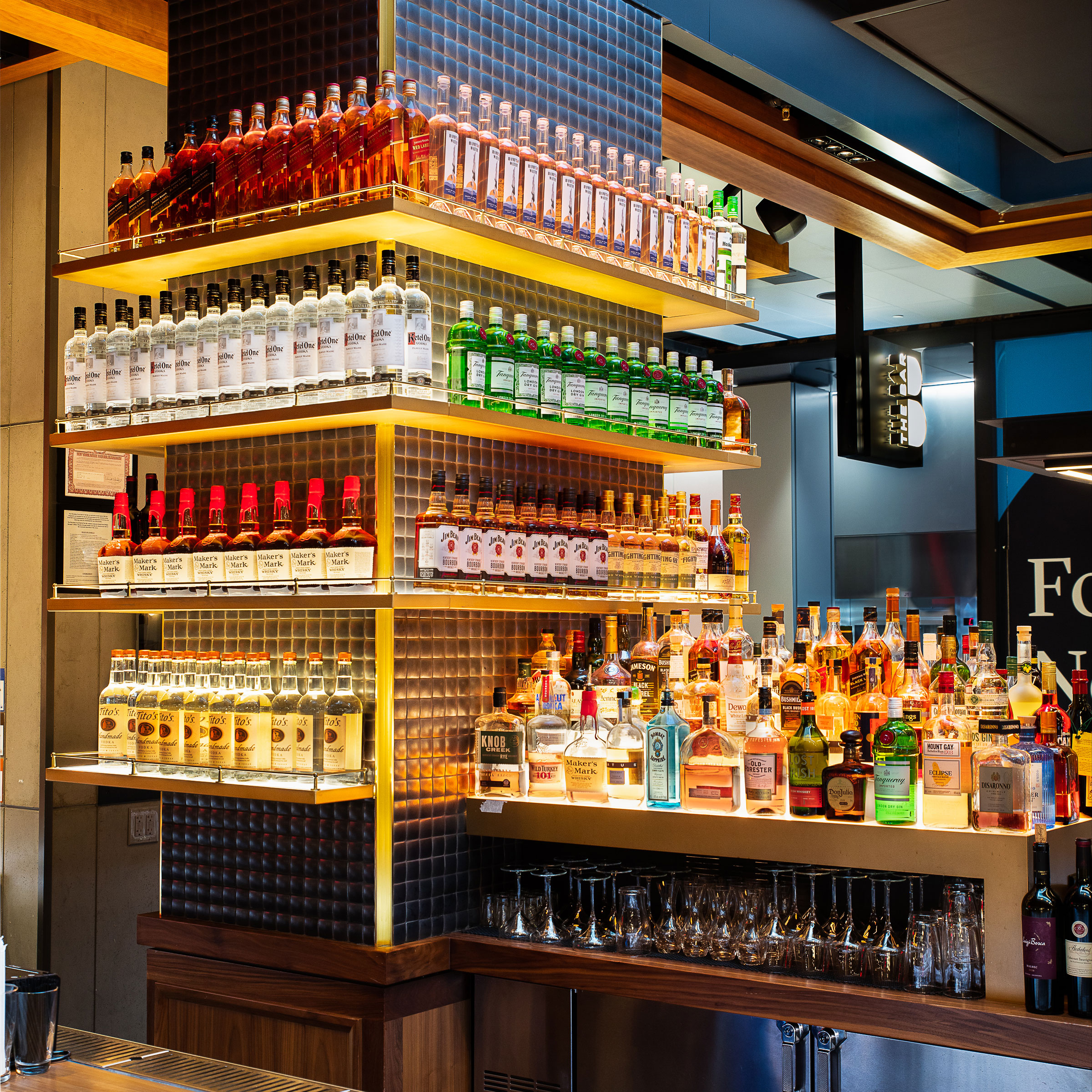
"We're picky about color consistency. As you can imagine, when the color is off, sometimes it just doesn't feel right. Here, it all ties together beautifully. Ultimately, everyone is very happy with the design and the project is a success," Nira affirms.
